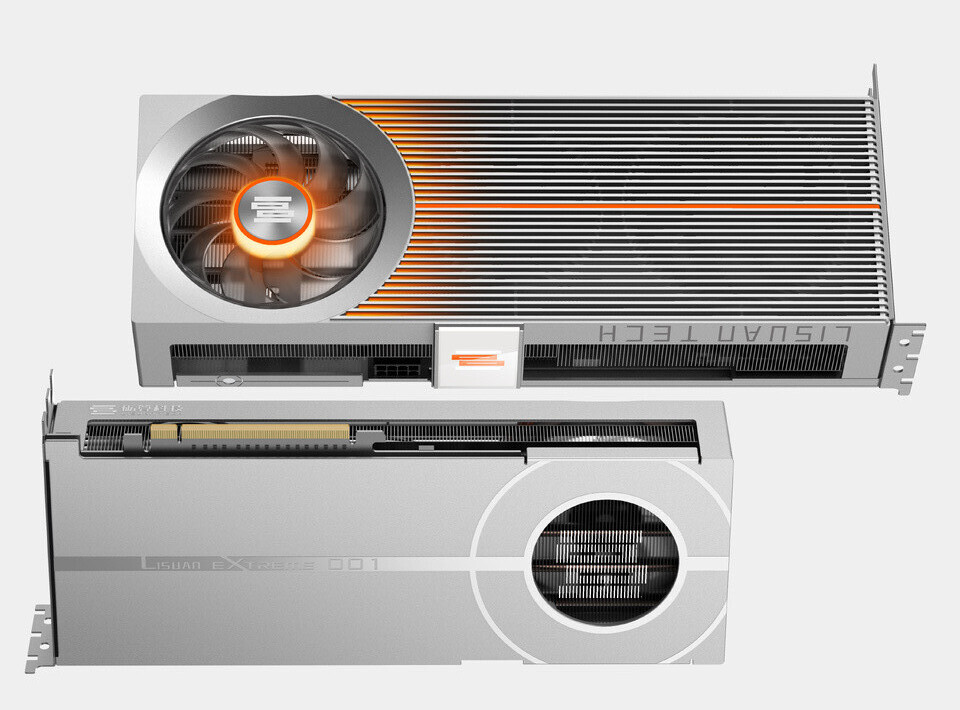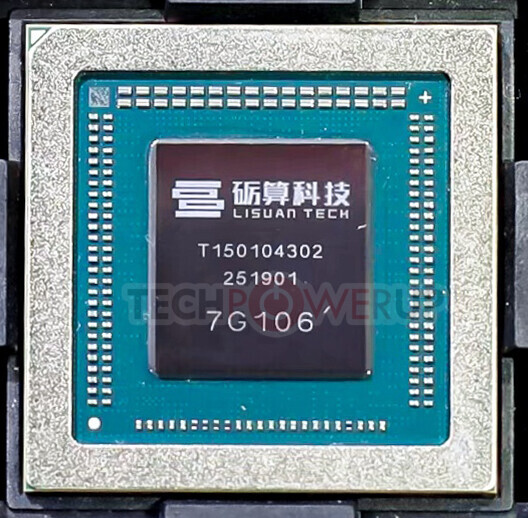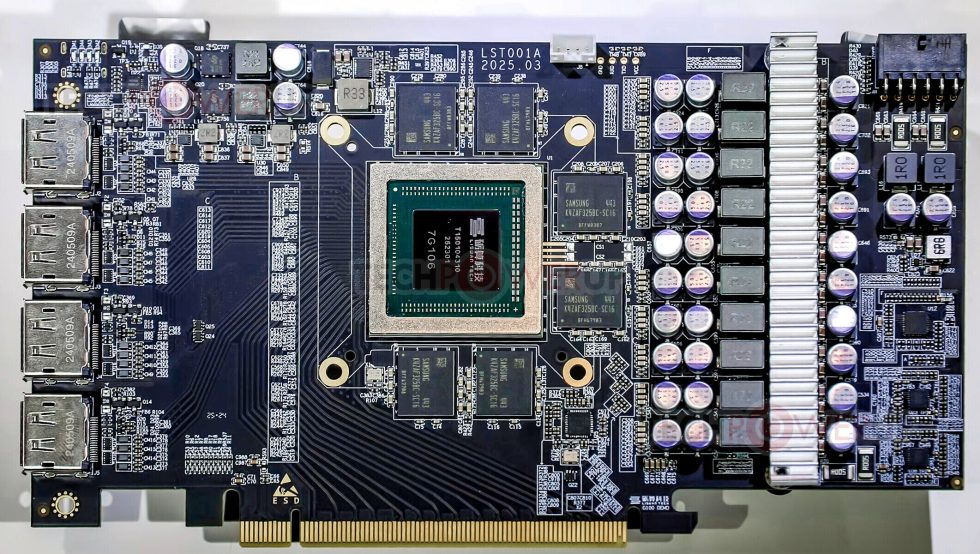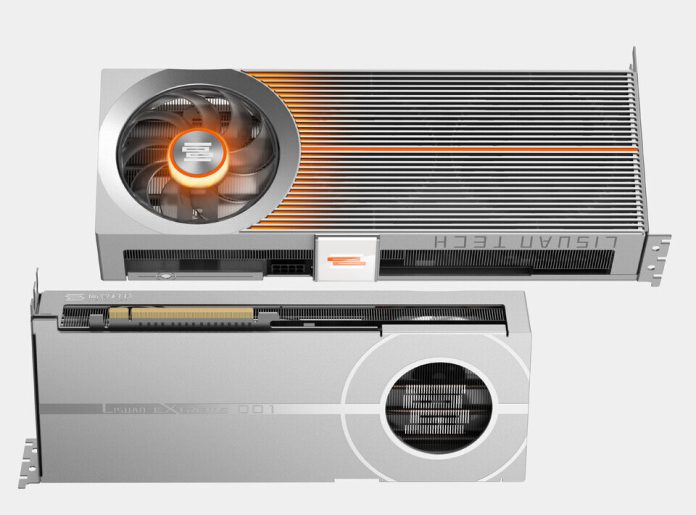“7G” – a code that almost sounds like “miracle” in Chinese. Whether this is a marketing fortune cookie or a technological prophecy remains to be seen, reports btarunr from TechPowerUP. What Lisuan Technology is presenting with the 7G106 (internally called G100) is nothing less than the first serious attempt to emancipate itself from Nvidia & AMD. No license alliance, no Western IP crutch – a GPU from scratch, manufactured in the 6 nm DUV process, and this in a country that is only just beginning to break free from the spell of Western technology exports.

Architecture: One monolith for many containers
The TrueGPU architecture of the 7G106 is a monolithic all-rounder. It relies on SIMD engines, FP32 peaks of 24 TFLOP/s and a 192-bit memory interface with 12 GB GDDR6 – not a world record, but pragmatic in view of the target group (China, mid-range, gaming without ray tracing fetish). 192 TMUs, 96 ROPs – sounds like a design that they wanted to make work without incurring debts with TSMC or the HDMI antitrust authorities. Speaking of HDMI: no luck. Four DisplayPort 1.4 with DSC 1.2b – a friendly reminder that Lisuan is not willing to pay for Western license games. HDMI costs money, and if you have to save money, you start with symbolic politics.
Raytracing? No. SR-IOV? Yes.
What it lacks technically (ray tracing, DX12 Ultimate), it makes up for with a full set of virtualization functions. SR-IOV with 16 containers – i.e. GPU sharing at enterprise level. They are obviously not only thinking of gamers, but also of state data centers and cloud providers with a patriotism guarantee.
Geekbench and the myth of the miracle chip
Early tests on Geekbench were sobering: 256 MB VRAM, 300 MHz, just 15,000 points. Performance at the level of a GTX 660 Ti – museum material from today’s perspective. But as is the case with A0 steppings: what works, works badly, and that’s okay. It only got exciting with the latest leak. Now suddenly: 48 compute units, 2 GHz clock, 12 GB VRAM, 111,000 points in OpenCL – roughly at RTX 4060 level. This is not a revolution, but a demonstration of power: you can. Not good yet, but at least. If this is true – and if it’s not all just benchmarks on steroids – Lisuan could indeed become Asia’s first independent GPU forge.

But the market does not forget
However, a GPU is not a benchmark chart, but an ecosystem. And there’s a huge gap: no dev kits for studios, no driver support à la Nvidia Game Ready, no expertise in game engines, no DirectML, no AI integration, no DLSS counterpart. Hardware without software is like an airplane without an engine: impressive on paper, useless in the air.
A diplomatic capitulation or a technological upgrade?
Lisuan walks a fine line between political symbol and real product. On the one hand, the 7G106 is a technological statement, almost a geopolitical manifesto against Western tech hegemony. On the other hand, the current status is strongly reminiscent of the stage at which AMD’s Vega 10 was circling around without driver support – technically impressive, but unrealistic. The GPU is supposed to speak PCIe 4.0, decode 8K videos, encode AV1 and also serve as a VGPU for 16 virtual machines. Sounds great, but as long as clock speeds, power budgets and real drivers are missing, everything remains gray theory. The PCB sometimes shows an 8-pin, sometimes a 16-pin. Which applies? Nobody knows. What does it cost? Nobody knows either. When will it arrive? Maybe next year. Maybe never.

Between hope and hardware illusion
Lisuan Tech has thrown the first stone – and this stone is not a pebble, but a 6 nm monolith with ambitions. The 7G106 is not an RTX or Radeon killer, but a wake-up call for the Western GPU duopolists: China no longer just wants to copy. It wants to play along. Even if it still needs 1-2 years of practice. If Lisuan gets the software problems under control and can deliver in series, it’s no wonder. It is the first step towards asserting itself in a market that has so far been dominated by Nvidia and flanked by AMD – both with a deep US pedigree. Will that be enough? That’s not for Geekbench to decide, but for the gamer with a wallet and ambition.
Source:‘TechPowerUP

